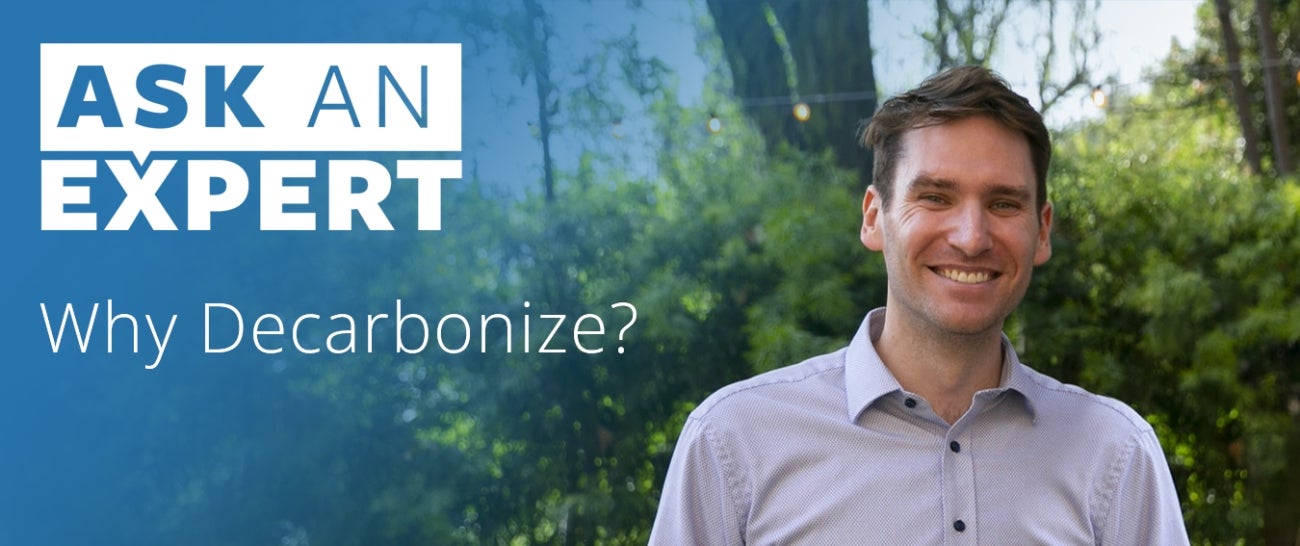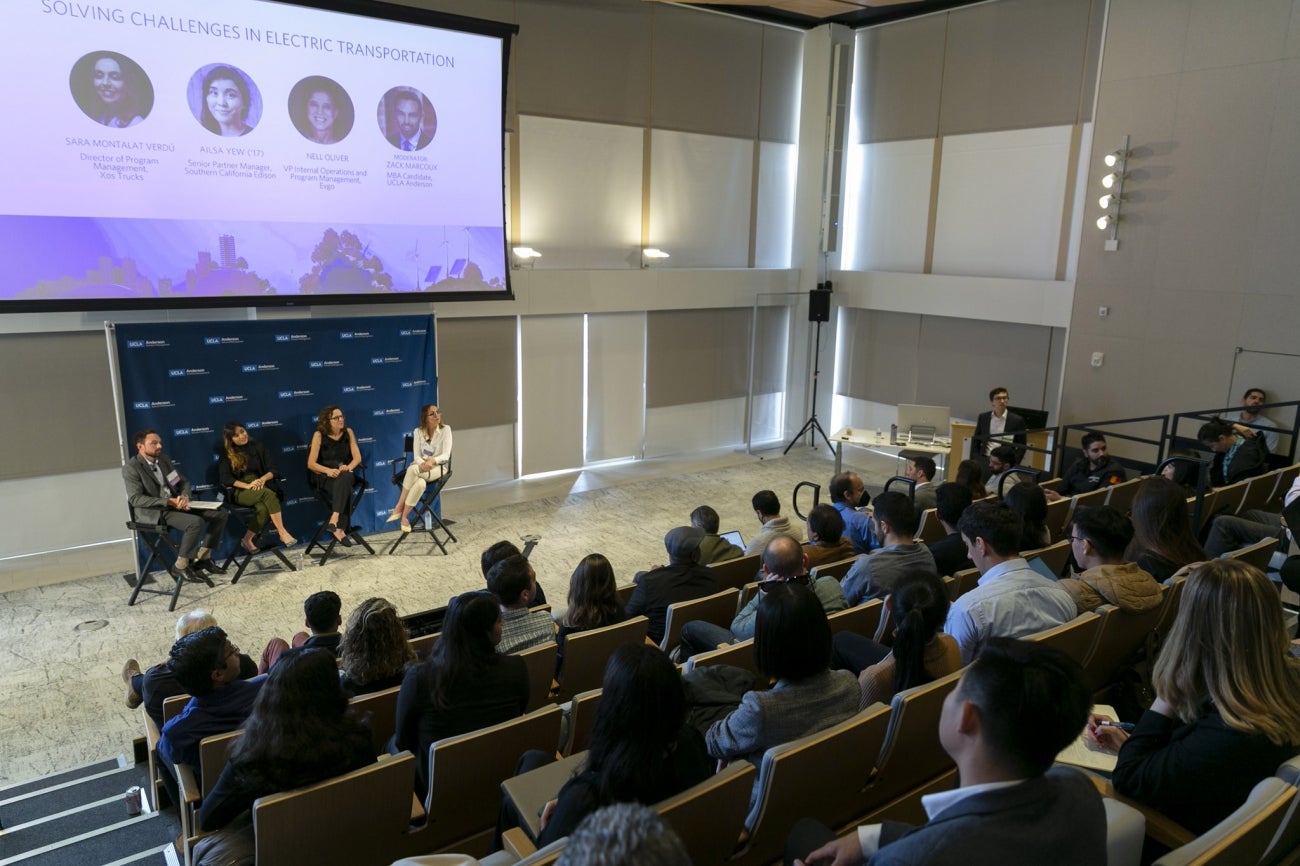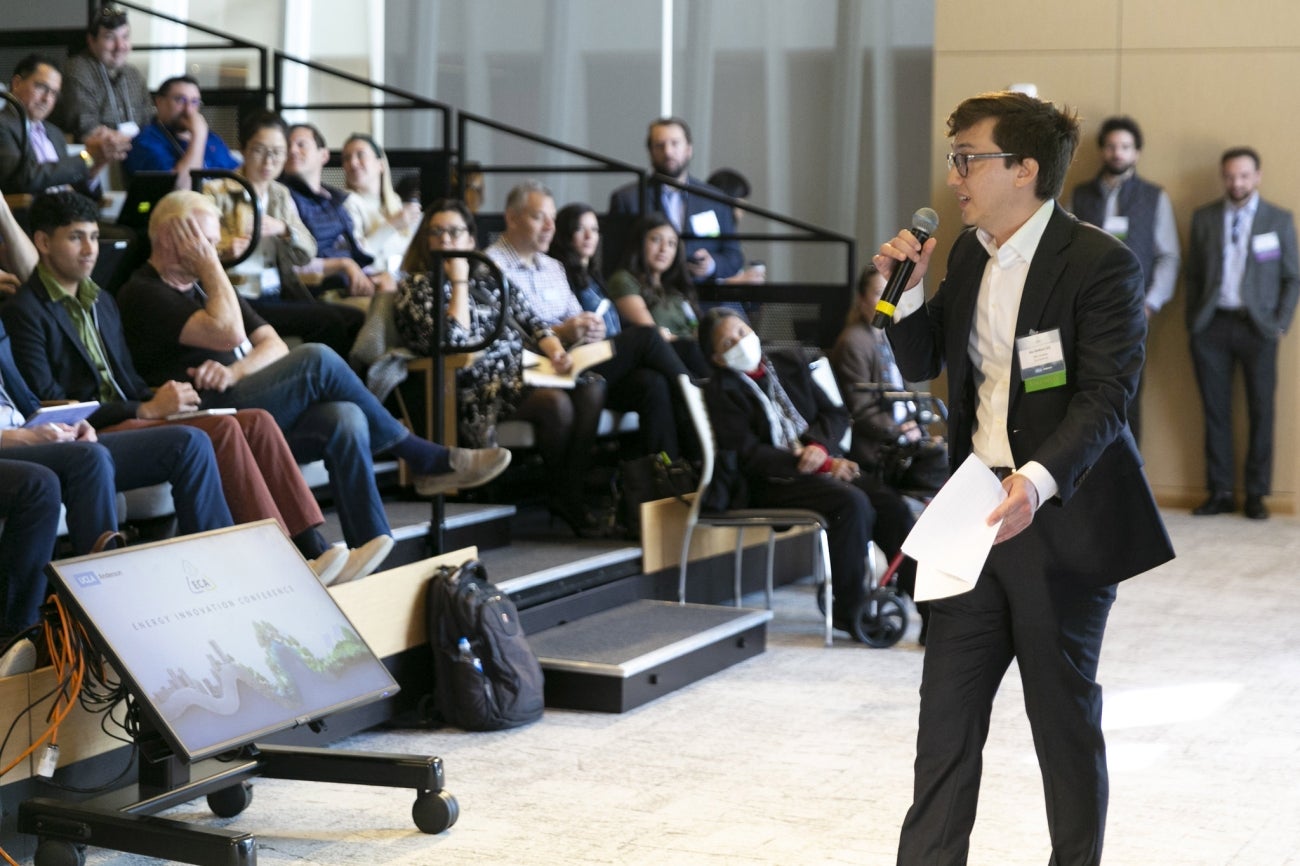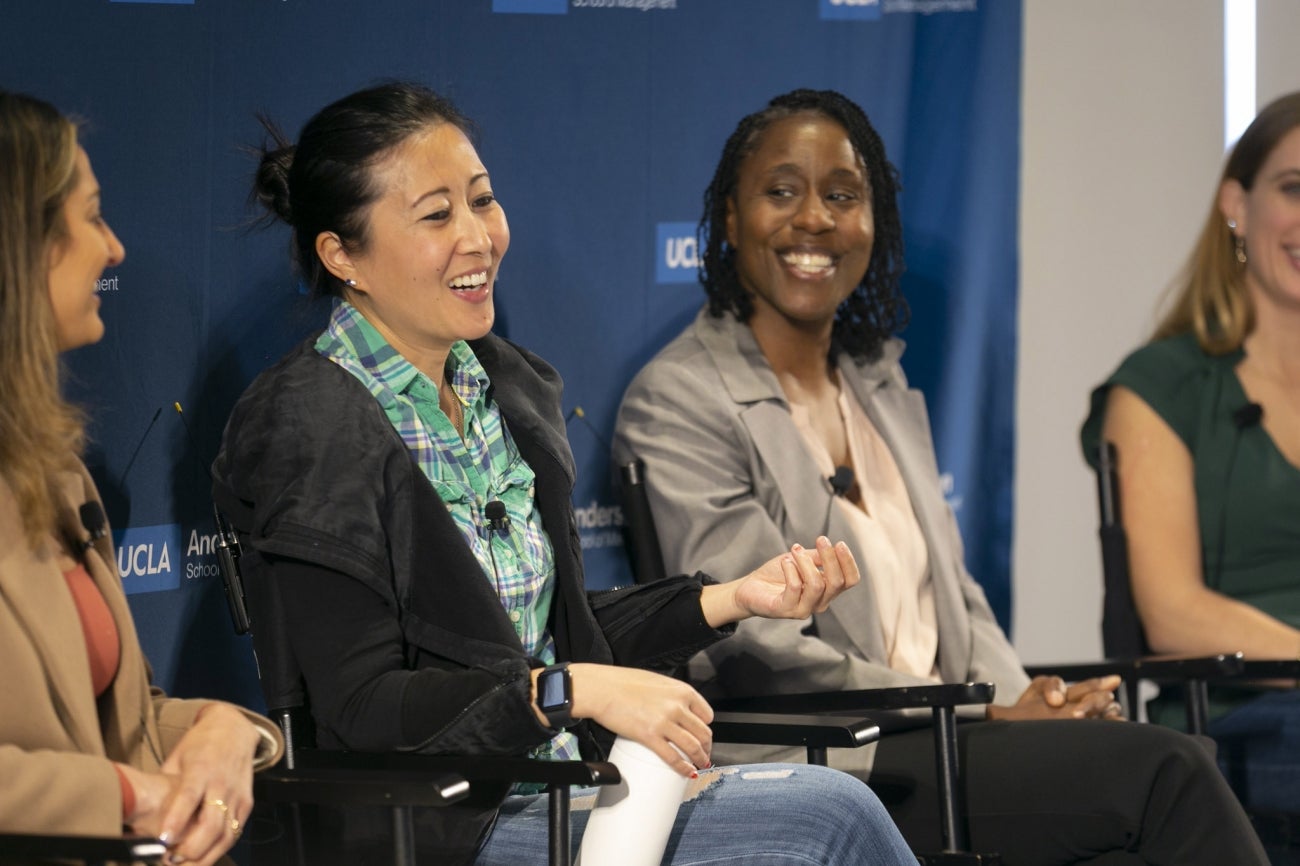Ask an Expert: Why Decarbonize?

Kevin Kuhn (’23)
UCLA Anderson’s Energy and Cleantech Association president explains our vested interest in reducing GHG — and the technologies that can help us solve the problem now

The 2023 Energy Innovation Conference included Solving Challenges in Electric Transportation, a panel of professionals in private transportation and public utilities
Why decarbonize?
If you care about slowing climate change then you should care about reducing carbon dioxide emissions from manufacturing and energy production.
The Earth naturally emits and stores around 100 billion tons of CO2 per year, which dwarfs human-generated carbon emissions. But our emissions are stacked on top of that natural process with nowhere to go, so all that carbon sticks around in our atmosphere — heating the planet, creating untenable imbalances in the natural world and severely compromising the quality of the air we all breathe. It’s estimated that in 2022 we added around 36.8 billion excess tons of CO2 equivalent to our environment. This accumulation of greenhouses gases in Earth’s atmosphere poses an existential threat to humanity. We’re faced with the choice of ignoring the problem or doing something about it.
Decarbonization is currently our best solution to address climate change. Futurists can dream of geo-engineering projects that bring Earth’s ecosystem back into a more predictable and sustainable equilibrium, but decarbonization is fully within our grasp now. It’s going to require commitment from individuals, companies and governments around the world. With enough investment, it could be the only solution we need.
The 2023 Energy Innovation Conference included Solving Challenges in Electric Transportation, a panel of professionals in private transportation and public utilities
What are the most promising innovations making a measurable difference, and how?
The largest strides have already been made. We don’t need massive innovation to make a huge difference because the technology is within our reach. Switching electricity generation away from coal and gas to solar and wind, electrifying transportation, increasing energy efficiency — all of these actions have massive measurable effects.
I’m particularly excited about the leaps being made in energy storage and electrification of transportation. In 2020, electric generation and transportation accounted for close to 60% of the U.S.’s carbon emissions, or 3,110 million metric tons of CO2 equivalent. We have the technology to halve that number in the next decade.
The solutions are simple but can be expensive, so now it’s a matter of investing in and capitalizing on existing technology. The areas I expect to see the most growth in are transmission and storage. The Inflation Reduction Act of 2022 provides billions of dollars in grants and incentives that can help modernize our grid and build large-scale battery storage.

ECA’s VP of events Alex Wolfson (’23) introduces UCLA Anderson’s 2023 Energy Innovation Conference
ECA’s VP of events Alex Wolfson (’23) introduces UCLA Anderson’s 2023 Energy Innovation Conference

Zora Chung, CFO of battery diagnostics and optimization company ReJoule, joined the panel on cleantech startups
How is California a leader in these efforts? What strides are L.A. and UCLA making, through specific initiatives or policies?
California has set goals to reduce emissions by 84% by 2045 and so far seems to be making great progress getting a lot of electric generation switched over to renewables. L.A. in particular has a very aggressive plan to become net zero by 2045, supported by the major utilities, Southern California Edison and Los Angeles Department of Water and Power.
UCLA faculty and grad students who conduct research on sustainability and carbon sequestration — such as Anderson’s Magali Delmas and Charles Corbett, both affiliated with UCLA’s Institute of the Environment and Sustainability — are seen as global leaders. IoES offers graduate students, including our MBA students, the opportunity to earn the Leaders in Sustainability Certificate. Anderson’s Center for Impact has launched Open for Good, a research-driven platform with interactive data visualizations of S&P 500 firms’ ESG disclosures. It’s going to help ensure transparency about companies’ greenhouse gas emissions.
Our campus also houses the Institute for Carbon Management, which partners with the heaviest of heavy industries and has pioneered breakthroughs like a nearly CO2-neutral concrete. With continued investment, Anderson’s energy and climate-tech profile will keep growing as well. The Energy Innovation Conference ECA just held (our first in-person since the COVID-19 pandemic started) is one example of how Anderson is leading the conversation around decarbonization.
Zora Chung, CFO of battery diagnostics and optimization company ReJoule, joined the panel on cleantech startups